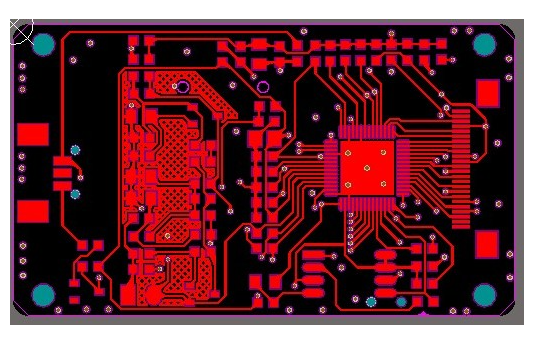In the PCBA processing process, in addition to batch soldering using reflow soldering and wave soldering, manual soldering is also required to complete the production of the product.
Matters needing attention during PCBA manual soldering:
1. It must be operated with an electrostatic ring. The human body can generate static electricity of more than 10,000 volts, and the IC will be damaged when the voltage is more than 300 volts. Therefore, the static electricity of the human body needs to be discharged through the ground wire.
2. Wear gloves or finger cots to operate, and bare hands cannot directly touch the machine board and the golden fingers of the components.
3. Perform welding with the correct welding temperature, welding angle, and welding sequence, and maintain proper welding time.
4. Correctly handle the PCB: Hold the edge of the PCB when handling the PCB, and do not touch the components on the board.

5. Use low temperature soldering as much as possible: high temperature soldering will accelerate the oxidation of the soldering iron tip and reduce the life of the soldering iron tip. If the temperature of the soldering iron tip exceeds 470°C. Its oxidation rate is twice that of 380°C.
6. Do not apply too much pressure when soldering: Do not apply too much pressure when soldering, otherwise the tip of the soldering iron will be damaged and deformed. As long as the soldering iron tip can fully contact the solder joints, heat can be transferred. (Choose different soldering iron tips according to the size of the solder joints, which can also make the soldering iron tips better heat transfer).
7. Do not knock or shake the tip of the soldering iron when soldering: knocking or shaking the tip of the soldering iron will damage the heating core and the tin bead spattering, shortening the service life of the heating core. If the tin bead splashes on the PCBA, it may form a short circuit and cause Poor electrical performance.
8. Use a wet sponge to remove the soldering iron tip oxides and excess tin dross. The water content of the cleaning sponge should be appropriate. If the water content is too high, not only the solder swarf on the soldering iron tip cannot be completely removed, but also due to the sharp drop in the temperature of the soldering iron tip (this Thermal shock damages the soldering iron tip and the heating elements inside the soldering iron greatly), resulting in poor soldering such as missed soldering and false soldering. The water on the soldering iron tip sticks to the circuit board, which will also cause the circuit board to corrode and short-circuit. Too little or no wet water treatment will damage the soldering iron tip, oxidize and cause no tin, and it is also easy to cause poor soldering such as false soldering. Always check that the water content in the sponge is appropriate, and clean the tin slag and other sundries in the sponge at least 3 times a day.
9. The amount of tin and flux should be appropriate during soldering. Too much solder can easily cause tin connection or cover soldering defects. Too little solder not only has low mechanical strength, but also the surface oxide layer gradually deepens over time, which may easily lead to solder joint failure. Too much flux will pollute and corrode the PCBA, and may cause electrical defects such as leakage. Too little will not work.
10. Always keep the soldering iron tip on the tin: This can reduce the chance of oxidation of the soldering iron tip and make the soldering iron tip more durable.
11. The incidence of flux spatter and solder balls is related to the proficiency of the soldering operation and the temperature of the soldering iron tip; the problem of flux spatter during soldering: When the solder wire is directly melted with a soldering iron, the flux will rapidly heat up and splash. When soldering, use solder The method that the wire does not directly touch the soldering iron can reduce the splashing of the flux.
12. When soldering, be careful not to scald the plastic insulation layer of the surrounding wires and the surface of the components, especially for products with compact soldering structures and complicated shapes.
13. After welding, self-check is required:
A. Whether there is missing solder.
B.Whether the solder joints are smooth, full and shiny.
C. Whether there is residual flux around the solder joints.
D. There is no Lianxi.
E. Whether the pad has fallen off.
F. Whether there are cracks in the solder joints.
G. Whether the solder joints are sharpened.
14. When welding, you also need to pay attention to some safety matters, wear a mask, and be equipped with exhaust equipment such as an exhaust fan to keep the welding station ventilated.
When doing PCBA manual soldering, pay attention to some basic precautions, which can greatly improve the soldering technology and the soldering quality of the product.